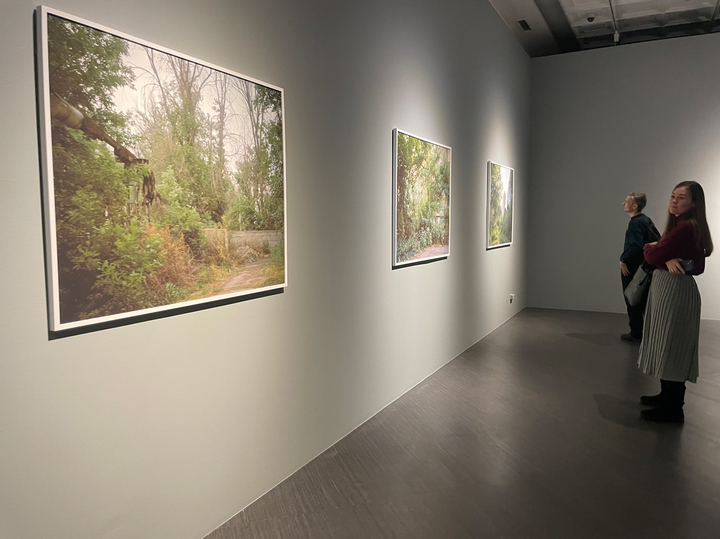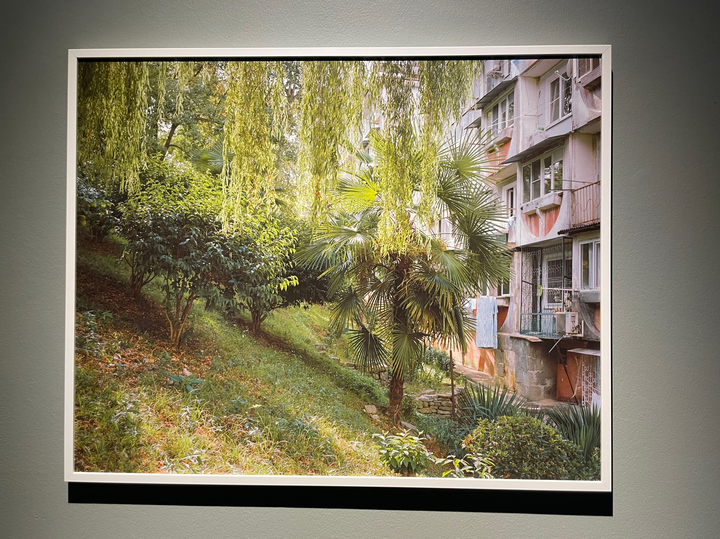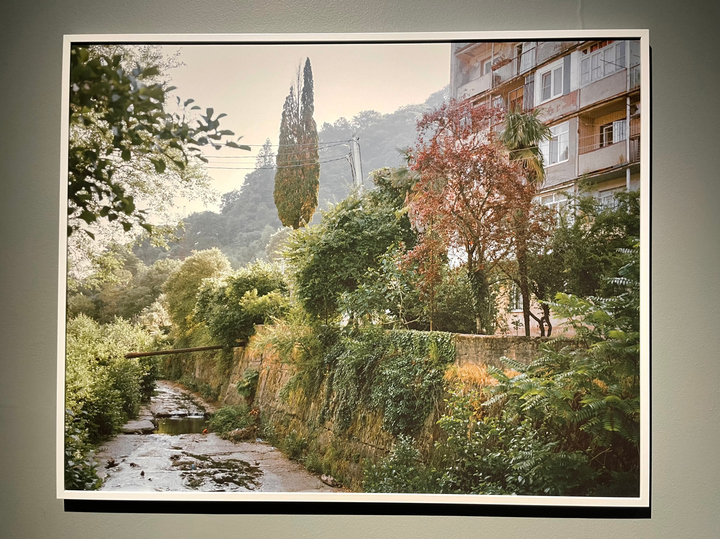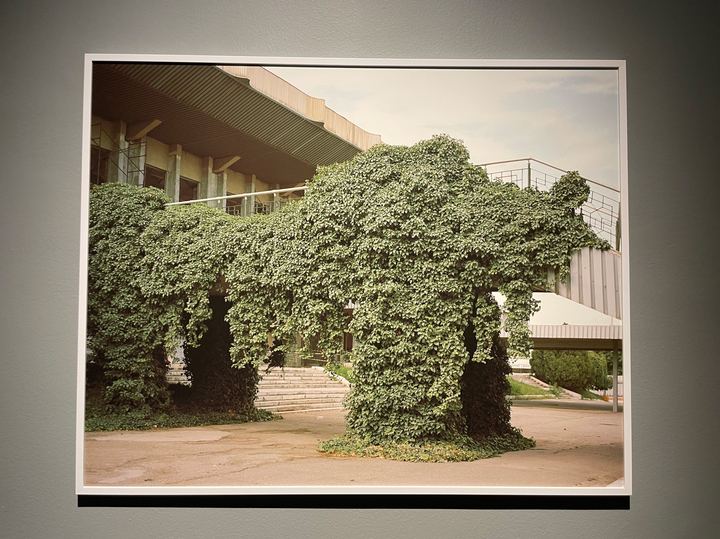Artist Anastasia Tsayder painted the image of the new Arcadia
[ad_1]
Russia has turned into a city-forest
Arcadia is an idyllic place where, according to ancient Greek legends, man lived in harmony with nature and himself. The image of the mythical country of peace, freedom and happiness was sung by poets and artists of different eras – from Virgil and Dante to Poussin and Makovsky. Contemporary photographer and artist Anastasia Tsayder, following her great predecessors, turned to the utopian image and found it in the realities of today. It seems that before us are shots from the film “Life after people”, where the socialist idea of a garden city turned into a natural city-forest.
Several halls of the exhibition at the Ekaterina Foundation are occupied with photographs of urban landscapes: in each of them, nature wins over the concrete jungle. Before us are bridges overgrown with ivy, buried in the greenery of Khrushchev, road asphalt torn apart by plants.
There are views where houses peacefully coexist with nature, there are crumbling buildings militantly captured by greenery. It seems that they all merge into a single picture, although in fact the geography of the project is very wide: Apatity, Bishkek, Vladivostok, Kursk, Minsk, Moscow, Osh, Riga, St. Petersburg, Sochi, Tashkent, Togliatti.

Unites all types and one more motive – not a single frame has a person. As if we are looking at the cities where a person suddenly disappeared from, and watching their subsequent life. The paradox is that there is nothing invented in this story – the artist captures what he sees.
“In many cities of Russia, at some point, a person no longer had enough resources to follow nature, and she took her own,” says Anastasia Tsayder to MK. – I’m not saying that it’s bad, but stating. Of course, there is a post-apocalyptic mood in this project. Although I personally grew up in one of these overgrown courtyards in St. Petersburg, and this environment seems natural to me.

– Futurists at the beginning of the 20th century dreamed of a “garden city”, there were many projects, and none of them were fully realized. Does your project refer to that urban utopia?
— Yes, only now the garden city has turned into a forest city. Idyllic idea – in ruins.
The city-forest, visualized with the help of picturesque photographs, at the exhibition rests on two “dead ends”, where the viewer comes face to face with the collapse of a utopian dream. One of the outermost halls is immersed in semi-darkness, in the center of which is a small installation on the podium: in front of us is a model of a typical Khrushchev, filled with water, like a pool. Concrete walls and partitions are devoid of vegetation. Here the expression “after us even a deluge” takes on visible forms.

The last hall from the other end of the exhibition is also in semi-darkness. Here we have a large screen in front of which broken glass is scattered. In the video, we see how fireworks light up in the middle of the park, sparkle with multi-colored lights and go out, leaving behind only dirt.
Only at first glance, the project that Anastasia Tsayder has been preparing for about five years is calm and quiet. Before us is a complex metaphor, where a young artist, on the one hand, finds refuge in nature from social pressure and urban bustle. Many viewers met familiar views at the exhibition, which they look out of the window every day – there are many Moscow districts in the exhibition, from Biryulevsky Park to Skhodnensky bucket. Faced with their native places, people stood next to their photographs for a long time, it seems, finding strength and peace in them.

On the other hand, despair is read in these deserted landscapes: the modern artist no longer believes that a person is able to achieve balance and build a garden city. The new image of Arcadia depicts the paradoxical coexistence of idyll and decay.
[ad_2]
Source link






